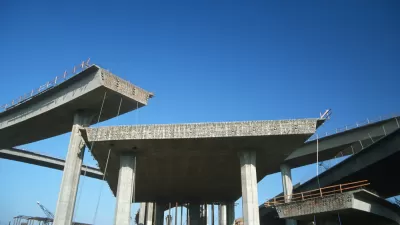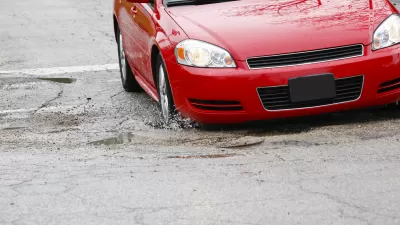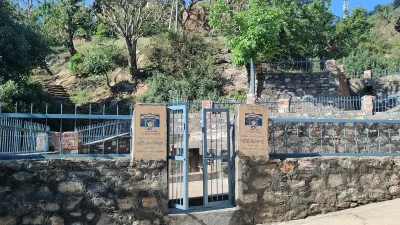Congress needs to do more than fund the status quo in its next infrastructure bill, whenever that long-promised bill becomes a reality.

Democratic leadership is negotiating with President Trump over a $2 trillion-dollar infrastructure bill, but exactly what makes it into the bill will have a tremendous impact on the environment and the country's ability to maintain its transportation resources. While those negotiations have again stalled, the eventual outcome of this bill will have a huge impact. "The country must prioritize measures that shift commuters toward transit while fixing decaying bridges and essential roadways that are a public safety risk if neglected any longer, said the authors of the U.S. PIRG Education Fund study," Aaron Short reports.
The authors of that study write that rather than focusing on expensive to build and maintain auto infrastructure, the country must spend on more cycling, transit and walking. "In the past, lawmakers didn’t worry that building an interstate highway system could lead to sprawling neighborhoods, polluted air that triggers asthma attacks, and a dependency on fossil fuels that we’ve been unable to kick for more than a half century," Short argues. Beyond active transit the author’s of the study argue for a greater focus on water infrastructure, arguing that the issue's importance is only likely to grow.
FULL STORY: There’s a Right Way to Spend Trillions on Infrastructure

Alabama: Trump Terminates Settlements for Black Communities Harmed By Raw Sewage
Trump deemed the landmark civil rights agreement “illegal DEI and environmental justice policy.”

Planetizen Federal Action Tracker
A weekly monitor of how Trump’s orders and actions are impacting planners and planning in America.

The 120 Year Old Tiny Home Villages That Sheltered San Francisco’s Earthquake Refugees
More than a century ago, San Francisco mobilized to house thousands of residents displaced by the 1906 earthquake. Could their strategy offer a model for the present?

In Both Crashes and Crime, Public Transportation is Far Safer than Driving
Contrary to popular assumptions, public transportation has far lower crash and crime rates than automobile travel. For safer communities, improve and encourage transit travel.

Report: Zoning Reforms Should Complement Nashville’s Ambitious Transit Plan
Without reform, restrictive zoning codes will limit the impact of the city’s planned transit expansion and could exclude some of the residents who depend on transit the most.

Judge Orders Release of Frozen IRA, IIJA Funding
The decision is a victory for environmental groups who charged that freezing funds for critical infrastructure and disaster response programs caused “real and irreparable harm” to communities.
Urban Design for Planners 1: Software Tools
This six-course series explores essential urban design concepts using open source software and equips planners with the tools they need to participate fully in the urban design process.
Planning for Universal Design
Learn the tools for implementing Universal Design in planning regulations.
Clanton & Associates, Inc.
Jessamine County Fiscal Court
Institute for Housing and Urban Development Studies (IHS)
City of Grandview
Harvard GSD Executive Education
Toledo-Lucas County Plan Commissions
Salt Lake City
NYU Wagner Graduate School of Public Service





























